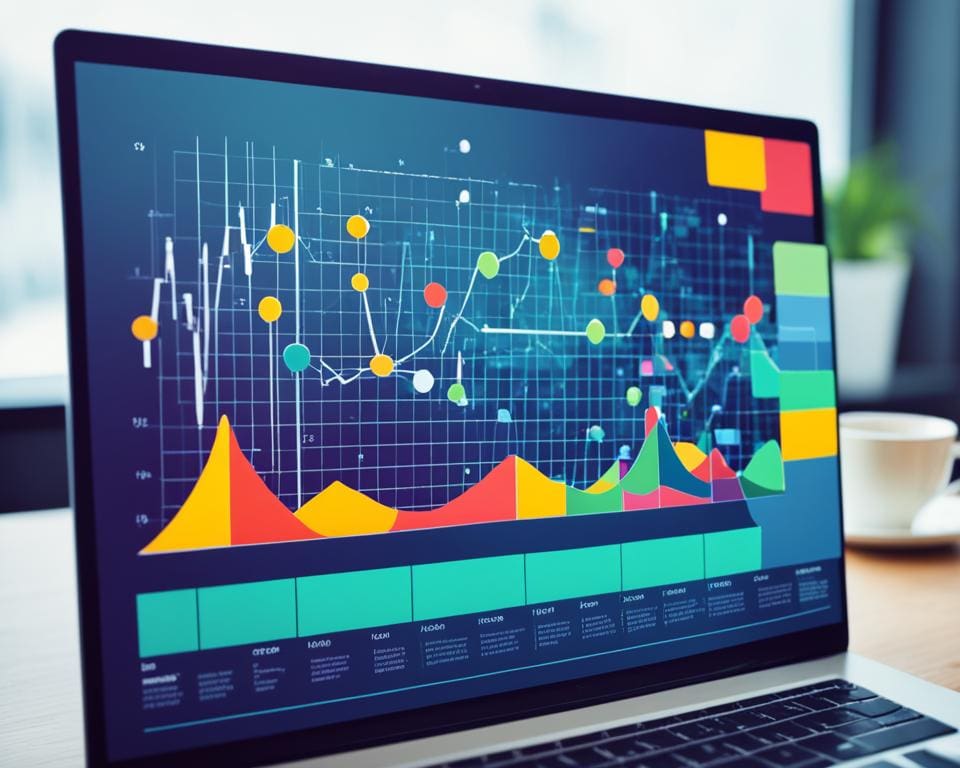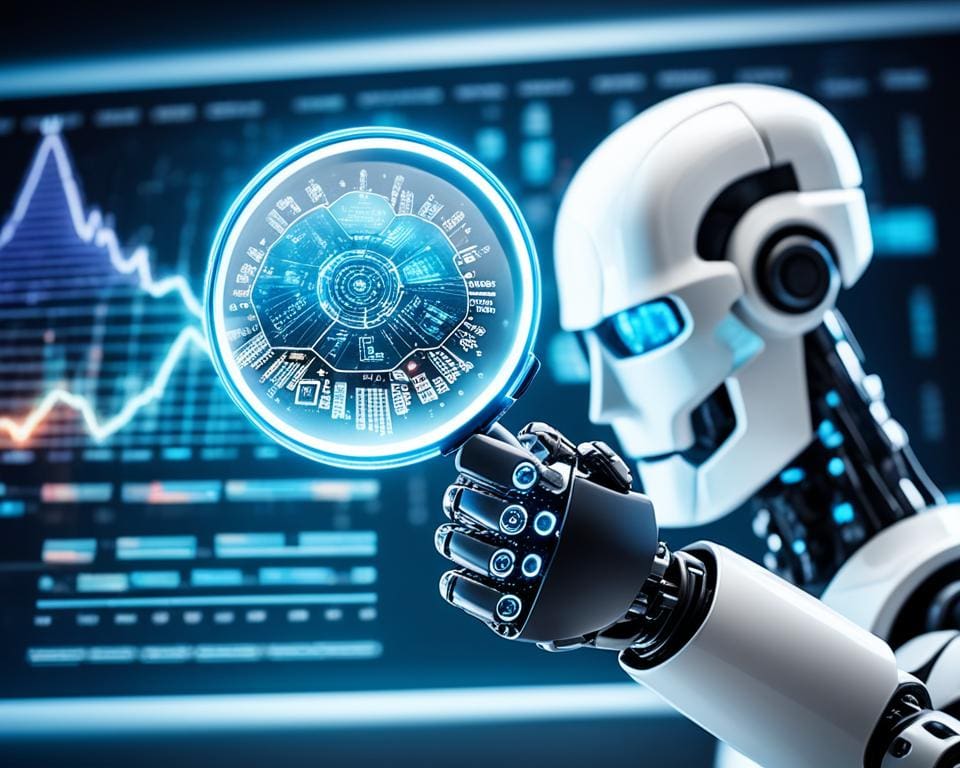In today’s world, knowing how AI helps in predictive analytics is key for competitive businesses. AI lets companies quickly go through huge amounts of data, giving valuable insights. Traditional predictive methods can’t keep up and take lots of time and effort for just a few data points. AI changes that, making it quick to handle millions of data points.
AI does more than just speed things up in predictive analytics. It’s changing industries like healthcare, finance, marketing, and customer service. These fields use AI to improve decisions, make operations more efficient, and better customer experiences. AI algorithms find patterns in past data, helping make smarter plans for the future.
Using AI in predictive analytics makes things smoother and helps companies reduce risks and make customers happier with targeted ads. We’ll look into how predictive analytics works and how AI is making a big difference. This opens the door to stronger growth and more innovation for businesses.
What is Predictive Analytics?
Predictive analytics is a high-tech way of looking into the future, using old and new data. It helps organizations predict trends and behaviors to make smart choices. At its heart, it uses various models and methods. These let data scientists find connections in the data they study.
Definition and Key Concepts
Predictive analytics starts with key steps that include problem definition and dealing with data. This means getting the data, organizing, and cleaning it. Then, developing and testing models to predict outcomes. It mainly uses two models: classification and regression. Techniques like regression analysis, decision trees, and neural networks are vital. They are helpful in many fields like banking, healthcare, and manufacturing for detecting fraud and boosting operations.
Traditional Methods of Predictive Analytics
Old-school predictive analytics used statistics to gain basic insights. But, they struggle with complex and massive data sets. Nowadays, as data grows in size and complexity, relying only on these old methods is hard. This situation shows why AI is becoming important in predictive analytics. AI can handle big data more effectively.
Limitations of Traditional Predictive Analytics
Even though old predictive methods were useful, they have big limits. They don’t scale well with large amounts of data, affecting accuracy. They also need manual updates, which doesn’t fit the quick changes in the business world. This has led to a shift towards combining predictive analytics with machine learning. It allows for immediate updates and better decision-making.

Understanding the Role of AI in Predictive Analytics
AI technologies are changing the way organizations use data for decision-making. With AI, businesses can quickly analyze huge amounts of data. This helps them get insights that were hard to find before. Now, AI in predictive analytics makes real-time analysis possible. This lets organizations stay ahead in the fast-moving market.
Integration of AI Technologies
AI technologies like machine learning, deep learning, and natural language processing are key to predictive analytics. Machine learning helps create AI models that get better over time. Deep learning finds complex patterns in big datasets.
Natural language processing helps analyze texts. Together, these technologies boost analysis in many fields, from retail to healthcare.
Key AI Technologies Impacting Predictive Analytics
AI brings many benefits to predictive analytics. It makes data processing faster, enhancing efficiency and decisions. For instance, in healthcare, it allows for the early detection of diseases. In finance, it helps spot fraud by examining past data patterns.
This shows AI’s vital role across various sectors like retail and manufacturing.
Benefits of AI in Predictive Analytics
AI in predictive analytics improves prediction accuracy and makes operations smoother. It helps companies react quickly to market changes and use resources wisely. They can also provide personalized customer experiences. Thanks to AI, organizations can grab new opportunities and tackle challenges more easily.









